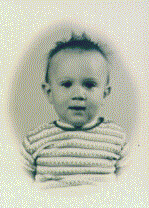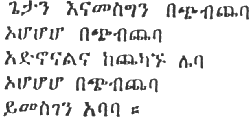
ONLY A PIGEON: Simon & Schuster (c) 1997, illustrated by E.B. Lewis
A boy in Addis Ababa, who works hard to earn money for
his family by shining shoes, spends most of the time
when he isn't working or going to school caring for
his pigeons, protecting them from the weasels and
other creatures that creep through the dark.
Winner of the Parents' Choice Gold Award,
which the editor calls "a distinguished and
coveted award" and "wonderful honor."
"This contemporary urban scene is a long way from picturesque, exotic Africans in native dress. Kids will be caught by the pet story of pigeon raising (an author's note discusses training) as much as by the account of one boy and the place where he lives." Booklist
"Scenery and portraits alike exhibit great skill in portraying the city and one boy's place in it, while the elegant storytelling is suffused with the quiet tension of the pigeons in danger." Kirkus
"Here, finally, is a picture book about an African boy who lives in a
city. In well-crafted, sometimes lyrical language and visual images, his
life is made very real." School Library Journal
--Jane says, "A lot of my childhood memories in Maji
are memories of four sisters--playing together, making
up and acting out stories together, taking baths
together, having school together, sharing a room.
Then, when I was eight years old, my only brother was
born. I was used to thinking of my sister Cathy as
the baby of the family. Now, suddenly, there was a new
baby--and I was old enough to think this was a Very
Big Deal!

Also, we lived in a society where it's very important to have at least one boy in a family. The people around us called my brother, Christopher, the crown prince. Everyone, including me, thought he was special. We fought for our turn to hold him and take care of him. Here's a picture of me holding Chris not long after he was born. (I'm also the one holding Chris's hands in the family picture.)
Two years later,
a fifth sister, Jan, was born, and that was a big
thrill for me, too. I was always pretty much of a
'middle kid,' but Chris and Jan got to be big time
'babies of the family.'"
--Are there people in your family who have an automatic special place just because of when they were born? Have you thought about how it has affected your life to be the oldest or the youngest or somewhere in the middle?

--Writers end up taking bits and pieces of their lives and weaving them into their stories and other writing- -sometimes without even noticing. Jane says, "When I wrote FIRE ON THE MOUNTAIN, I knew I needed to change the judge in the story to another kind of character, since a judge doesn't play as much part in the life of U.S. kids as he does to Ethiopian kids. It came to me to make the judge into an older sister. It wasn't until I saw Earl Lewis's art for the cover that I realized how much my own life went into that book."

--After Chris, Jane's brother, grew up, he decided
to spend some time with his family in Ethiopia,
teaching. When he came back to the U.S., he talked
about the pigeon boys in Addis Ababa who had taught
him to raise pigeons. "I was struck," Jane says, "by
how kids who have no toys, almost no stuff at all,
still find a way to be playful and hopeful and a way
to take care of something or somebody." Chris and
Jane decided to write the book that became ONLY A
PIGEON. In spring of 1995, Chris and Earl Lewis, the
illustrator, went to Ethiopia together so that Earl
could meet the pigeon boys for himself and see what
the pigeon coops looked like.
Have you ever tried writing a story with someone
else? It's quite a challenge, but it can be fun, too.
How do you decide who gets to do what? How do you
work together to write the best story possible? You
might want to write to Jane or Chris by e-mail and ask
how they ended up writing their story together.
(Hint: they laughed, a lot, and sometimes got mad,
too.) Do you have any hobbies or fascinations that
might make good things to write about?
--The Language of Doves by Rosemary Wells with pictures by Greg Shed (Dial) takes place in Brooklyn and Italy, yet you'll find some interesting similarities between the children in that book and ONLY A PIGEON. See what things you notice.
--Another book to look at may be Under the Blood-Red
Sun by Graham Salisbury, a novel for 10-14-year-olds
set in Hawaii during World War II. Tomi, whose
grandfather moved to Hawaii from Japan, helps take
care of his father's pigeons, but (as you can see in
The Language of Doves) homing birds have often been
used in war, and after Japanese planes attack Pearl
Harbor, American soldiers won't let the pigeons live.
Different cultures have different ideas about
what things are okay or not okay to eat. Most
Ethiopians would not consider it okay to eat a pigeon.
In Salisbury's book, you can find how a Japanese
person might feel about that.
--You might want to research what happened to passenger pigeons in the U.S. You can also read an interesting related picture book, Grandmother's Pigeon by Louise Erdrich, illustrated by Jim LaMarche (Hyperion).
--Since FIRE ON THE MOUNTAIN and ONLY A PIGEON are illustrated by the same person, take a look at the two books together to see what interesting things you can see. Remember, Earl Lewis met some Ethiopians in Philadelphia and also looked at lots of pictures before he did the art for FIRE. But he actually went to Ethiopia before he did the art for PIGEON. Before the book comes out, you may contact Jane if you'd like to try your own illustrations and then see if Earl's vision looks at all like yours.
 --Many youngsters in Ethiopia don't get to go to
school at all. Others, like Onduahlem, only get to go
half a day because the schools are so crowded. These
are what the Amharic words look like that Onduahlem
would pratice shaping in school.
--Many youngsters in Ethiopia don't get to go to
school at all. Others, like Onduahlem, only get to go
half a day because the schools are so crowded. These
are what the Amharic words look like that Onduahlem
would pratice shaping in school.
--If you'd like to learn more about racing pigeons, read an issue of Racing Pigeon Digest (which calls itself "The Thinking Man's Journal of Racing Homers"). You can contact Gene Yoes at Box 3088, Lake Charles, LA 70602 (318) 474-1289--or e-mail RPDYoes@aol.com--to ask about how to get a sample copy. In a letter to the editor last year, one man wrote that pigeon racing clubs are losing members. "It is suprising to me that we are not losing more. A large number of our present flyers have had pigeons since they were children. How many children have pigeons today? A very small number, indeed. What we are doing today in our sport is equivalent to trying to organize and operate the National Football league with people who have never played football as children or in college, but begain playing when they were already adults." Any ideas why so few children today have pigeons?
--In the book called All the Small Poems and Fourteen More by Valerie Worth, with illustrations by Natalie Babbitt (Farrar), look at the poem called "Pigeons." See if you can find something for each of the five senses in that poem. Notice how the author uses the five senses to make you experience those pigeons. How do Jane and Chris use the five senses to help you experience their pigeons?
--Ondu-ahlem visits the markato on his way home from shining shoes--perhaps
the biggest open air market in all of Africa. Look at Market! by Ted
Lewin (Lothrop) for wonderful illustrations of how markets work on five
continents.